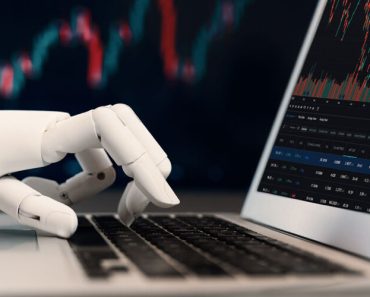In the realm of forex trading, consistency is key. However, maintaining consistent returns in the volatile world of foreign exchange markets can be a daunting task. Fluctuating economic conditions, geopolitical events and unpredictable market sentiment often challenge traders to keep their strategies on track. In recent years, the rise of automated trading systems, particularly forex robots, has provided forex robot readers with a powerful tool to navigate these challenges and achieve sustained profitability.
Forex robots, also known as expert advisors (EAs), are software programs designed to analyze market data, execute trades, and manage positions automatically. Leveraging advanced algorithms and artificial intelligence, these robots can process vast amounts of information and make trading decisions in real-time, without human intervention. This automation not only eliminates emotional biases but also allows for rapid execution of trading strategies, potentially capitalizing on fleeting market opportunities.
One of the primary advantages of using forex robots is their ability to maintain discipline and consistency in trading. Human traders are susceptible to emotions such as fear, greed, and anxiety, which can cloud judgment and lead to impulsive decisions. In contrast, robots operate based on predefined parameters and rules, adhering strictly to the trading strategy coded into them. This disciplined approach helps mitigate the impact of emotional trading, reducing the likelihood of costly mistakes and increasing the probability of consistent returns over time.
Moreover, forex robots can operate around the clock, taking advantage of opportunities in different time zones and ensuring that no trading opportunity is missed. This 24/7 availability is particularly beneficial in the forex market, which operates continuously from Monday to Friday. By monitoring the markets non-stop, robots can react swiftly to changes and execute trades promptly, potentially capturing profits in volatile market conditions or during unexpected price movements.
Another key benefit of forex robots is their ability to backtest trading strategies using historical data. Before deploying a robot in live trading, traders can simulate its performance over past market conditions to assess its effectiveness and refine its parameters. This process allows traders to optimize their strategies, identify potential weaknesses, and fine-tune risk management protocols, thereby enhancing the robot’s ability to generate consistent returns in real-time trading.
Furthermore, forex robots can be customized to suit various trading styles and preferences. Whether a trader prefers scalping, day trading, swing trading, or long-term investing, there are robots available to cater to their specific needs. Additionally, advanced users can modify the underlying algorithms of forex robots or create their own from scratch, tailoring them to unique market conditions or implementing proprietary trading strategies.
However, despite their potential benefits, forex robots are not without limitations and risks. One of the primary concerns is over-optimization, whereby a robot is fine-tuned to perform exceptionally well on historical data but fails to adapt effectively to changing market conditions. Over-optimized robots may exhibit poor performance in live trading, as they struggle to generalize from past data and adjust to evolving market dynamics. To mitigate this risk, traders should exercise caution when optimizing robots and prioritize robustness and adaptability over excessive performance on historical data.
Additionally, while forex robots can automate many aspects of trading, they are not a substitute for human judgment and expertise. Markets can behave unpredictably, especially during periods of high volatility or major economic events, and robots may struggle to interpret complex signals or adjust to sudden shifts in market sentiment. Human intervention may be necessary to override automated decisions, intervene during exceptional circumstances, or implement discretionary strategies that cannot be programmed into robots.
Moreover, the proliferation of forex robots has led to concerns about their impact on market dynamics, particularly in terms of liquidity and price discovery. As more traders rely on automated systems, there is a risk of increased correlation in trading strategies, heightened market volatility, or even flash crashes triggered by algorithmic trading algorithms. Regulators and market participants are closely monitoring these developments to ensure the stability and integrity of financial markets in the face of technological advancements.
In conclusion, forex robots offer traders a powerful tool to achieve consistent returns in the foreign exchange markets. By automating trading processes, maintaining discipline, and optimizing strategies, these robots can help traders navigate market complexities and capitalize on opportunities while mitigating risks. However, traders need to exercise caution, avoid over-optimization, and supplement automated trading with human judgment to ensure long-term success. With the right approach, forex robots can be valuable allies in the pursuit of profitability in forex trading.

![Download Insta Pro Apk Latest [v9.90 Version Updated 2024] Sam Mods Download Insta Pro Apk Latest [v9.90 Version Updated 2024] Sam Mods](https://www.hdmovieshub.us/wp-content/uploads/2024/01/IMG-20240119-WA0004-370x297.jpg)



